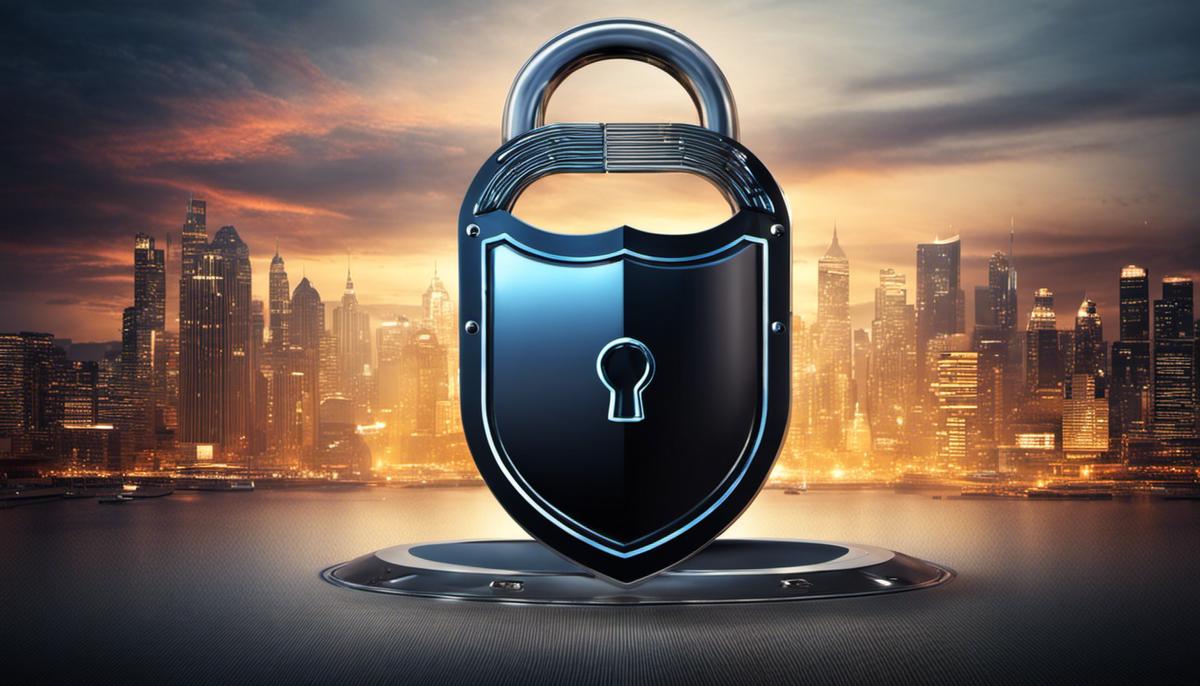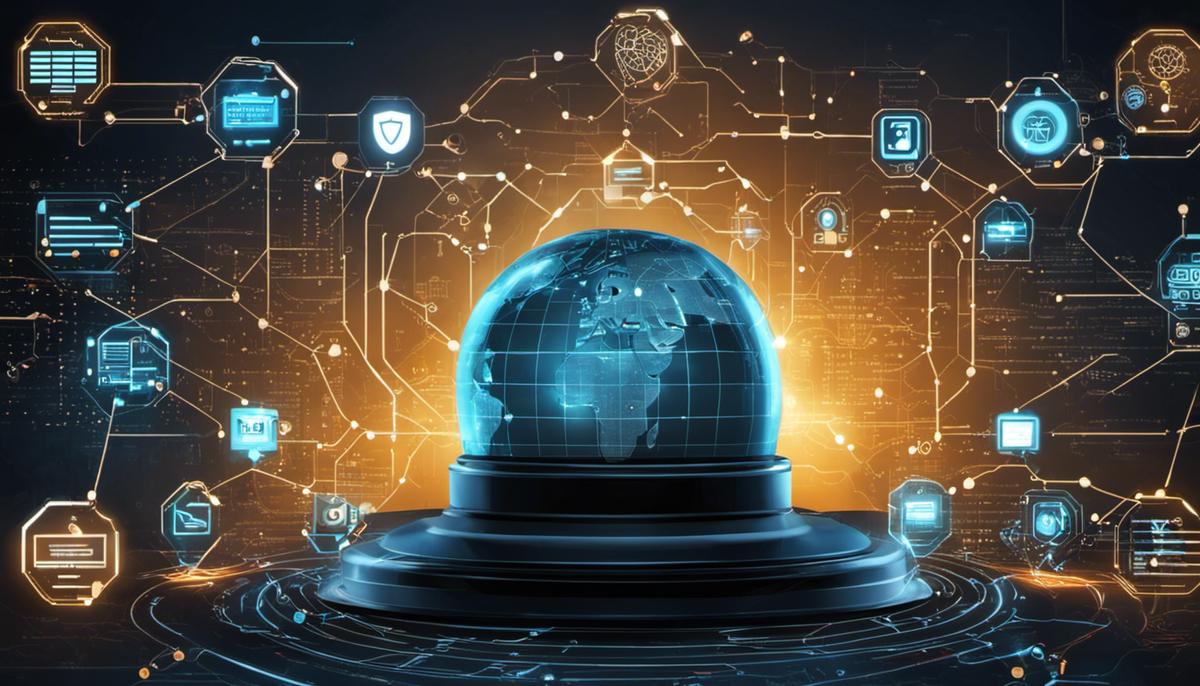From safeguarding confidential data to circumventing unauthorized access, an effective cyber security plan offers an effective shield against these threats. By understanding the significance of robust cybersecurity measures, identifying potential vulnerabilities, implementing protective measures, and continually educating ourselves about evolving cyber threats, we can’t only keep our digital ecosystem secure but also sustain our reputation and integrity.
Understanding the Importance of the Cyber Security Plan
Cybersecurity is the New Black
In today’s increasingly digitized world, hardly a day passes without news of a data breach or cyber attack making headlines. Ponder this: what if it’s your personal data or your business on the line next? The sobering truth is in today’s technological landscape, a strong cyber security plan is no longer optional. It’s critical.
The Cyber ecosystem has never been more active or sinister. Rapid advancements in technology offer immense strengths and, at the same time, tremendous vulnerabilities. The rising sophistication of cyber criminals and nation-state actors, coupled with the sheer volume of cyber attacks, necessitate a robust cyber defense. Simple password protection and firewalls just don’t cut it anymore. To win the game in the 21st century, one needs to have a strategy and execute it consistently.
The economy has never been more globalized and interconnected. Both public and private sectors heavily depend on digital systems for their operations. Any disruption due to a cyber threat could have ripple effects, crippling the economy and putting national security at risk.
The Internet of Things (IoT) is not just a buzzword. It’s a reality. As more devices connect to the internet, the attack surface for cybercriminals expands exponentially. Smart homes, wearables, connected vehicles, health monitors – each carries the potential of being an entry point for a hacker. The reliance on digital infrastructure is so pervasive it’s nearly unavoidable. All of this leads to a single, unequivocal conclusion: implementing a robust cybersecurity protocol is paramount.
Often, small to medium-sized enterprises (SMEs) are under the illusion that they are not in the crosshairs of cybercriminals. They could not be more mistaken. According to a report by Verizon, close to 43% of all data breach victims were SMEs. Cybercriminals generally perceive SMEs as soft targets because they often lack the robust cyber security defenses that larger corporations may have. No business, regardless of size, is immune.
With the advent of data privacy regulations like GDPR, organizations must not only protect themselves from attacks but also maintain the privacy of users’ data. Failure to do so can result in astronomical fines, not forgetting the damage it imposes on an organization’s reputation.
Given these realities, a strong cyber security plan isn’t just an asset; it’s an absolute necessity. It is an investment that dramatically decreases the risk of cyber attacks, safeguards consumers’ sensitive data, protects brand reputation, and ensures continuity in today’s interconnected world. The bottom line is simple: Cyber hygiene is good for business. Failing to recognize this fact isn’t cutting corners; it’s playing with fire.

Identifying Cyber Vulnerabilities
Unmasking Common Cyber Weaknesses: A Deeper Look into Cyber Vulnerabilities
To combat cyber threats more effectively, knowing what these threats target and how they can be detected is an essential step to securing our cyber environment. Four types of cyber vulnerabilities often dominate the cyber landscape – software vulnerabilities, hardware vulnerabilities, human vulnerabilities, and network vulnerabilities.
Software vulnerabilities typically emerge as a result of errors in programming, outdated updates, or lax security configurations. These can create weak spots that cyber attackers exploit to access valuable data or disrupt systems. Common examples include SQL injection, where attackers manipulate a site’s SQL queries to gain unauthorized access, and Cross-Site Scripting (XSS), where malicious scripts are injected into trusted websites. Detecting these vulnerabilities usually involves applications performing vulnerability scanning, automated security patching, and secure coding practices.
Hardware vulnerabilities, on the other hand, are weaknesses in physical devices that can be manipulated by cyber attackers. From insecure Wi-Fi routers to wearable devices, these vulnerabilities can allow attackers to intercept data, control device functions, or even render a device wholly inoperable. Identifying them requires regular hardware auditing, firmware updating, and the application of strong security controls.
However, technology isn’t the only source of vulnerabilities. Human vulnerabilities are a significant part of the cyber vulnerability matrix. Phishing attacks, social engineering, and poor password management can all lead to cyber breaches. Security awareness training, robust identity and access management, and regular suspicious email testing can combat these.
Network vulnerabilities expand the areas of attack for cybercriminals by providing opportunities for interception, data modification or unauthorized access. These vulnerabilities can exist in unprotected remote connections or poorly configured firewalls, leaving an open door for cyber attacks. Network vulnerability scanning, secure Virtual Private Network (VPN) setups, and advanced network security protocols serve as valuable detection measures.
In cybersecurity, knowledge is power. Understanding these common vulnerabilities forms the first line of defense in securing our cyber world. Now, more than ever, it’s vital to strengthen and update our cybersecurity strategies in answer to the growing complexities of the digital landscape. Despite having a myriad of sophisticated software, ultimately, cybersecurity is a human issue that demands continual vigilance, education, and best practices. Remember, the only safe computer is one that’s unplugged and in a locked room. Anything less, and it’s all a matter of risk management. There’s no finish line in security, only the next race.
Implementing Protective Measures
Without rehashing the comprehensive overview of the vulnerabilities in our cyber security landscape, it’s imperative to immediately dive into how these pitfalls can be fortified. Fundamentally, it boils down to four core pillars: advanced technology adoption, rigorous process implementation, continuous education, and strategic risk management planning.
To begin with, one of the contemporary advancements in technology worth noting is artificial intelligence (AI) and machine learning (ML). These technologies are excellent tools for augmenting cyber security defenses. AI and ML tools can identify and respond to anomalies on a network in real time, minimizing the damage caused by a breach. Given the constantly evolving nature of cyber threats, implementing these technologies fosters proactive rather than reactive cyber security plans.
From a process standpoint, utilizing password management tools and two-factor authentication (2FA) should be a standard. Here, robustness is key – these tools ensure that access to data and systems remains firmly in the hands of authorized personnel. Moreover, restricting the access and privileges of internal users based on the principle of least privilege (PoLP) is a vitally important measure in mitigating the potential damage of a compromised account.
Arguably, one of the most important tools for cyber security is continuous education. Empowering individuals to recognize and respond to threats can drastically reduce the potential for human error. Regular training sessions should be implemented to keep employees updated on the latest cybersecurity threats and best practices.
Finally, on risk management, one effective strategy to weigh potential losses against the cost of protective measures is by conducting a cost-benefit analysis. This will assist organizations in understanding their key vulnerabilities and allocating resources appropriately, thereby facilitating a more efficient cyber security plan.
To further bolster an organization’s cyber defenses, it’s worth exploring Cyber Security Insurance. It transfers some of the financial risks related to a cyber incident to the insurance company and provides organizations with additional resources during and after a breach.
To enhance the reliability of these protective measures, companies can also make use of third-party audits and ethical hacking. These measures allow organizations to assess their cyber defenses and identify overlooked vulnerabilities impartially.
Ultimately, the goal is not to create an impenetrable fortress but rather a flexible and resilient system that can withstand and recover quickly from attacks. It’s about building a robust cybersecurity program that continuously evolves, just as the threats do. The balancing act is to ensure the program doesn’t inhibit the company’s innovation and growth but rather supports and safeguards it. More than a challenge, cybersecurity should be seen as a strategic enabler of business in the digital age. In this relentless race against time and cybercriminals, there’s no room for complacency – it’s all about the survival of the most secure.

Educating Employees about Cyber Security
Creating a strong cybersecurity culture in businesses is an immense task, one that requires careful planning, deliberate application, and consistent effort. It starts with creating an atmosphere of shared responsibility where every team member understands their role in protecting the organization from cyber threats.
This role, of course, begins with comprehensive cybersecurity training. Deploying a targeted educational program that underscores the constant and evolving threat environment is a vital starting point. It’s not merely about learning the basics of safe internet procedures; instead, it should cover everything from complex phishing tactics to the implications of certain online behaviors. Rendered in a dynamic and interactive way, these learning experiences can heighten understanding and recall, ensuring the lessons are not quickly forgotten.
However, cybersecurity education should evolve beyond traditional lecture-oriented scenarios and lengthy security policy documents. Gamified learning experiences help reduce what might be regarded as a tedious topic into manageable bites while making it entertaining. Known as cyber ranges, these sessions involve realistic simulations of cybersecurity attacks where employees can respond in real time, a hands-on approach that significantly enhances overall understanding and preparedness.
Moreover, the education must be repetitive. Repetition helps inculcate these cybersecurity practices as habits. Frequent drills and training, covering various scenarios ranging from recognizing phishing threats to employing complex password practices, go a long way in cementing the practical aspects of cybersecurity among employees. Consistent reminders of the different attack vectors and the corresponding best practices can also be valuable in reinforcing secure behaviors.
Reward systems can also be utilized to foster a cybersecurity-focused culture. By acknowledging and rewarding those who exhibit the right behavior or successfully identify a threat, businesses can create a positive reinforcement loop, ensuring continued adherence to security guidelines.
But, one of the most effective methods to foster a strong cybersecurity culture would be employing real-world examples. Hearing about an actual data breach scenario, notably involving the company or a rival, helps underline the potential stakes involved. Predators are lurking, and the attack zones are never “someone else’s yard” anymore. Recognizing and understanding this reality creates a sense of urgency and relevance, driving home the essential nature of robust cybersecurity adherence.
Also, as work environments rapidly move towards a hybrid model with remote working as a core component, the technological expectations from employees are higher. To meet these, organizations should facilitate the needed cyber security tools, ranging from VPNs to end-point protection software, ensuring employees are not just educated but also adequately equipped to handle cyber threats.
Finally, fostering an environment of open communication helps. While some employees may hesitate to report lost devices or suspected phishing emails due to fear of repercussions, making it clear that they won’t face negative outcomes for reporting helps in early detection and prevention of possible cyber threats.
In summary, fostering a robust cybersecurity culture is about much more than installing the latest firewall or endpoint protection software. It’s a human-centric endeavor, one that requires a blend of learning, repeated practice, open communication, the use of the right tools, and a clear reinforcement of the shared responsibility concept amongst all team members.

Continuous Monitoring and Improvement
Robust incident response plan
In the cyber realm, no defense is invincible. Continuous monitoring is the backbone of a comprehensive cybersecurity strategy. The goal is not only to thwart attacks but also to identify the aftermath of a possibly successful attack as early as possible. An effective incident response plan springs into action in such situations, mitigating damage and setting the wheel of recovery in motion.
Incident response plans often comprise several layers of defense and pre-defined action strategies for different kinds of threat vectors. Having robust protocols for immediate containment, evidence preservation for root cause analysis, and communication channels for informing pertinent stakeholders are key components. Regularly revising this plan keeps the organization prepared for evolving threats.
Proactive threat-hunting strategies
Continuous improvement might involve employing threat-hunting strategies. The objective here is not to wait for an attack to occur before responding but to proactively look for indicators of an attack that might have slipped past the initial defense layers. Cutting-edge technologies such as Artificial Intelligence and Machine Learning are making remarkable strides in predicting and identifying anomalous patterns that could signal an attack.
Contingency planning and disaster recovery strategies
Cybersecurity is an ongoing battle. No organization can claim to be fully secure. What sets exceptional cyber security plans apart from mediocre ones is the readiness to deal with adverse situations. Contingency planning involves laying down various scenarios of possible breaches and building strategies to counter them. A good contingency plan will ensure business continuity, minimizing disruption.
Meanwhile, disaster recovery strategies are crucial to recover from a severe breach that results in substantial data loss. Regular data backups, fail-safe storage systems, and swift restoration procedures all fall under this. As technologies evolve, so does the method and strategy of data backup and retrieval. The adeptness to adapt to these changes is part of continuous improvement.
Continuous risk assessments
Continuous risk assessment aids in identifying and evaluating potential risks to the organization’s digital architecture. These assessments help in creating an ongoing snapshot of the organization’s security position, enabling swift and effective responses. Regular penetration testing, threat modeling, and vulnerability scanning are performed, and the results are used to update and fortify the existing defense measures.
Re-evaluating third-party service providers
Often, organizations rely on third-party services for various needs. Be it cloud storage, CRM, or simply remotely hosted websites, all these offer potential access points for attackers if not managed correctly. It’s vital that these services adhere to similar, if not more rigorous, security standards as the organization itself. Continuously re-evaluating these providers, their infrastructure, and their security policies should be an integral part of the cyber security plan.
In the grand scheme of things, continuous monitoring and improvement are not merely actions but an inherent culture that needs to be nurtured in the organization – a culture that respects the volatility and severity of cyber threats and identifies the path to resilience.

To stay secure in an increasingly vulnerable digital environment, ensuring the ongoing effectiveness of cybersecurity measures is paramount. With evolving digital threats, a static one-time approach to cybersecurity is no longer sufficient. Instead, a continuous effort to monitor, detect, analyze, and respond to potential threats in real time is needed. Automation can enhance these activities, making them more streamlined and efficient. Alongside regular software updates and the deployment of state-of-the-art cybersecurity tools, a persistent commitment to cybersecurity awareness and education can foster a more resilient digital landscape. Remember, every step taken toward robust cybersecurity is a stride toward a safer digital future for all.

